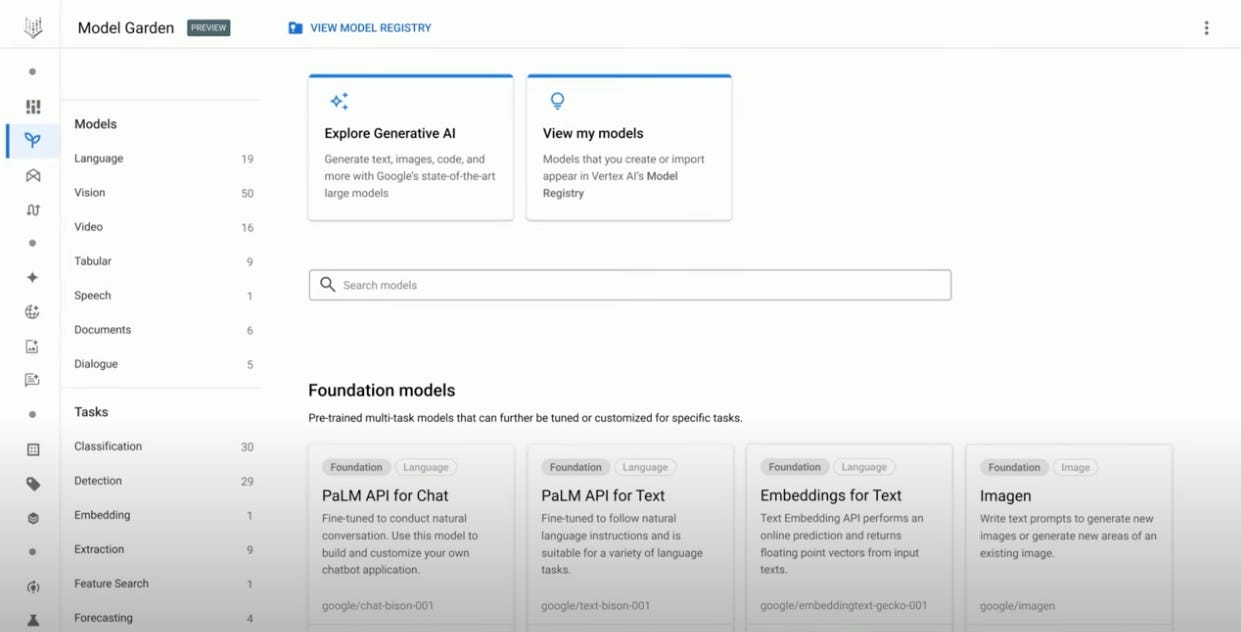Google I/O 2023: Revolutionising the cloud with Vertex AI
In this series of articles on Google I/O 2023, we cover how Google is unleashing the power of artificial intelligence. In this article, we talk about how Google is transforming Cloud with Vertex AI
Google I/O 2023, the annual developer conference held by Google, was full of exciting announcements and innovations in the field of artificial intelligence (AI). One of the most intriguing announcements was the introduction of Vertex AI, a unified platform for building and managing AI solutions at scale.
In this article, we talk about what is Vertex AI, its features and potential benefits.
What is Vertex AI?
Vertex AI is a cloud-based platform that provides a set of tools and services for developing, deploying, and monitoring AI models. Vertex AI aims to simplify and accelerate the entire AI lifecycle, from data preparation and feature engineering to model training and serving. Vertex AI also offers access to Google's cutting-edge foundation models, such as PaLM 2, Codey, Imagen, and Chirp, which can generate text, code, images, and speech respectively.
Key Features & Benefits
Managed data labelling
Vertex AI can help users create high-quality training data with minimal effort. Users can upload their data to Vertex AI and request human labellers to annotate it according to their specifications. Vertex AI also supports active learning, which means that it can automatically select the most informative samples for labelling, reducing the cost and time required for data annotation.
AutoML
With Vertex AI, users can automatically build and optimise custom models for various tasks, such as image classification, object detection, natural language processing, and tabular data analysis. Users can simply provide their labeled data and choose their desired objective and constraints. Vertex AI will then search for the best model architecture, hyper-parameters, and features for the task. Users can also compare and evaluate different models using various metrics and visualisations.
MLOps
It can help users manage the end-to-end deployment and operation of their models. Users can easily deploy their models to various endpoints, such as web services, mobile devices, or edge devices. Vertex AI also provides tools for monitoring the performance and health of the models, as well as detecting and resolving issues. Users can also leverage continuous integration and continuous delivery (CI/CD) pipelines to automate the testing and updating of their models.
Generative AI Studio
Vertex AI provides a web-based interface for accessing and interacting with Google's foundation models. Users can use natural language or graphical user interface (GUI) to prompt the models to generate content, such as text, code, images, or speech. Users can also fine-tune the models on their own data or use human feedback to improve the quality and relevance of the generated content.
Analysis & Conclusion
Vertex AI is set to revolutionise the way businesses and developers use AI. By offering a comprehensive and integrated platform for building and managing AI solutions at scale, Vertex AI enables users to focus on their core business problems and goals, rather than on the technical details and complexities of AI. Vertex AI also empowers users to leverage Google's state-of-the-art foundation models to create novel and engaging content for various domains and applications.
There is however a caveat. The success of Vertex AI will purely depend on the success of its foundational models. As it stands today, PaLM 2, the standard generative AI model for Google, continues to suffer with problems such as hallucinations, factual errors and logical errors. The success of this platform therefore is purely predicated on the eradication of these errors and fine tuning the foundational models of Google.





